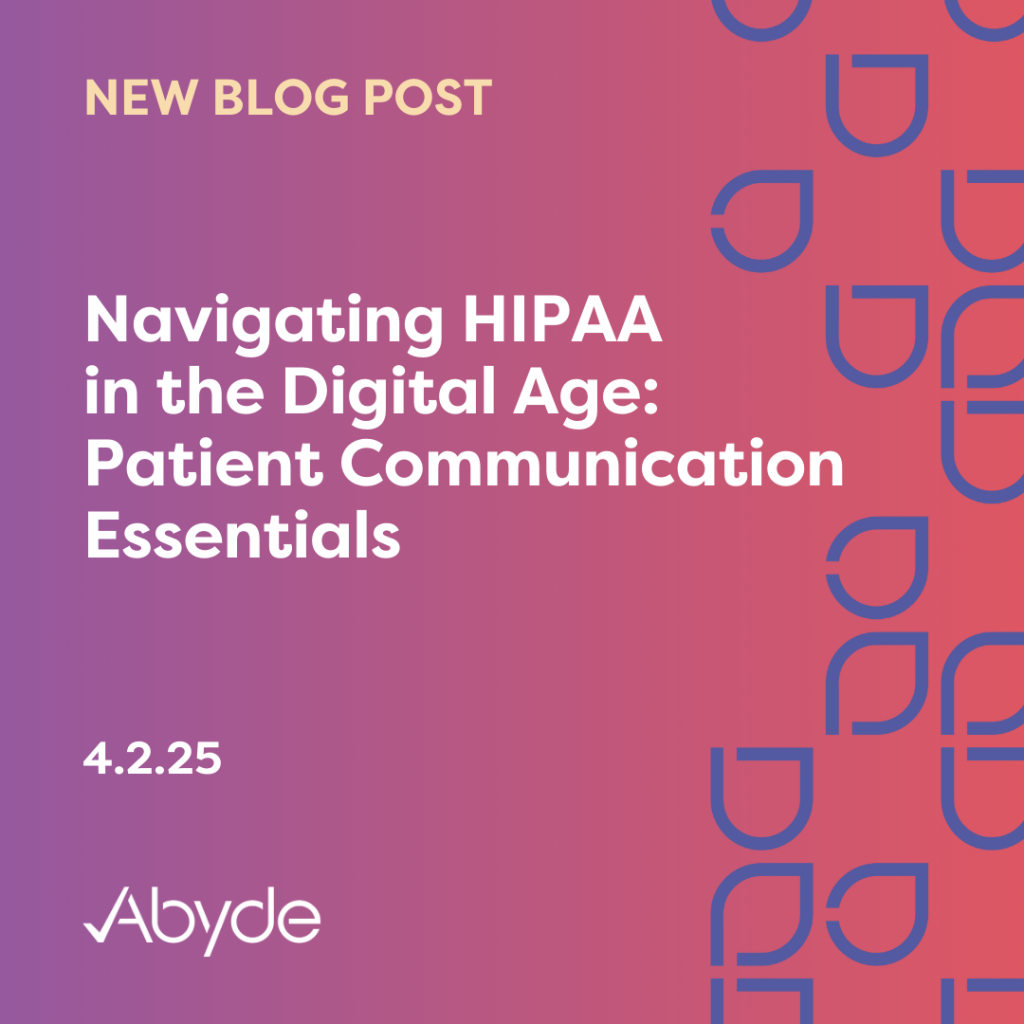April 2, 2025 When 80% of patients prefer digital communication, exploring this opportunity to better serve your patients is crucial. In the digital world, it’s easier than ever to connect with others and build relationships with others through technology. Connecting with patients via technology is simple, but practices must ensure that all communication, including emails, texts, and calls, adheres to HIPAA regulations. What is HIPAA-Compliant Communication? HIPAA, or the Health Insurance Portability and Accountability Act, is focused on ensuring the security of patients’ Protected Health Information (PHI). PHI includes anything personally identifiable about a patient, including Social Security Numbers, full names, addresses, medical history, and more. When communicating with a patient, it’s vital to implement the proper protocols to keep patient data safe. When patient data isn’t secured through traditional channels, using a regular phone doesn’t cut it. For instance, channels need to be encrypted, providing extra layers of protection. Additionally, it’s important to communicate with patients using the minimum amount of information necessary for a conversation. For example, if a patient texts asking to reschedule an appointment, a practice should offer new times and not go in-depth about a patient’s medical history. Communication should remain brief and focus on justifiable reasons to talk to a patient, like scheduling, post-op instructions, and test results. Patients need to consent to different forms of communication, like texts. The practice is responsible for receiving consent when a patient begins seeing a practice. How can I Implement HIPAA-Compliant Communication? An encrypted communication service is the easiest way to ensure secure communication channels. As communication with patients has become normalized in the healthcare industry, numerous organizations offer HIPAA-compliant communication systems. These systems include compliant and encrypted end-to-end phone calls, texts, and emails. Ensure these companies also do their due diligence and sign a Business Associate Agreement (BAA) with your communications provider. Once a suitable communication system is in place, training staff on communicating effectively and safely with patients electronically is crucial. Staff should be well-versed in the proper procedures for digital patient communication. This includes understanding the Minimum Necessary standard, carefully reviewing messages before sending them to patients (especially to ensure information is being sent to the correct patient), and recognizing phishing scams to verify the authenticity of communications before responding. What’s Next? Communicating with patients leads to a more successful practice, with higher attendance rates and more engaged patients. Digital communication is the future, and with the right tools, you can easily navigate HIPAA-compliant communication. In addition to using digital communication systems, implementing a smart software solution is key to a compliant practice. A centralized compliance hub allows you to easily see your vulnerabilities and organize vital documentation, like BAAs with third-party vendors you may use. Looking to learn more about how you can make your practice more efficient while still following rigorous HIPAA laws? Schedule a meeting with a compliance expert today.
Internal Communication Dos and Don’ts
October 6, 2022 Have you ever accidentally sent a text to the wrong person? Most of us have and it likely made your heart skip a beat! Now, imagine sending a text and thousands of patients’ health information gets leaked. Talk about a gut-wrenching moment! Speaking of leaks, did you know that over 1.14 million people have been impacted by a protected health information (PHI) breach just last month alone? The leaked data includes names, social security numbers, phone numbers, email addresses, and more. That’s 7% higher than last September! Internal communications are an efficient means of sharing and exchanging information within the practice. Employees communicate internally through channels like SMS, email, phone calls, and other means through the use of a third-party platform like Slack, Microsoft Teams, Zoom, and Cisco Webex. And while oftentimes we like the thought of quick and easy, it’s crucial to take that extra minute or two and double check that you are using a secure provider for all internal communication. First things first, if you haven’t already done so, take this as your sign to reach out to your communications provider and ask if they are HIPAA compliant. Many times, companies will have this information available on their website as well. Keep in mind that some providers, like Google and Microsoft, offer HIPAA compliant services in an upgraded package. If you are not using a secure platform, or you are unsure, then you should not be discussing ANY patient information through that method of communication (yes, that includes names!). If you are using a secure, HIPAA compliant provider or application for internal communication, great! The next very important step is to double check that you have a signed Business Associate Agreement. You may also be wondering about SMS/ text messaging within your organization. Staff members should not be texting each other with information related to patients, even if it is related to scheduling. Keep all work-related communication through your secure provider or application. Quick reminder! Just because you are communicating internally through a secure provider does not in fact mean you are compliant. You’ll also need to implement security policies and procedures in order to follow best practices. These policies and procedures should include: It is highly recommended that you consult with your IT professional for best practices on securing all applications in your practice. Lastly, It’s important to remember that HIPAA is not a barrier law and, in fact, is intended to help you share protected health information securely and efficiently. Being efficient within your practice can help the overall health of your patients and your organization. Having these best practices in place will help you and your team avoid the anxiety of sharing something that shouldn’t be shared.

